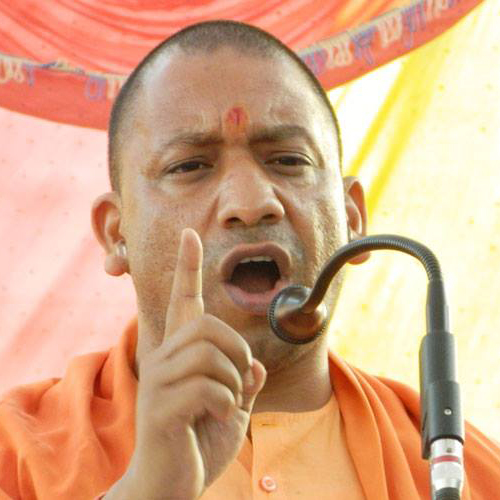
Gorakhnath Temple
Dr.Mazhar
Naqvi
Truth
is stranger than fiction. No one in India can imagine any association between
the famous Gorakhnath Temple and Imambara Miyan Sahib in Gorakhpur for the
simple reason that the temple has been a center of ‘Hindutva’ politics since
Independence while the caretaker of the Imambara is considered as head of the
Muslim community of Gorakhpur and adjoining areas. Yogi Adityanath who recently
became Chief Minister of Uttar Pradesh, the most populous state of India, is not
only head priest of the temple but also wears the image of a firebrand ‘Hindutva’
leader. His very name has been scaring the minority community ever since he
joined active politics and became Member of Parliament from Gorakhpur in
1998.Since then he has always emerged victorious in subsequent elections.

Yogi Adityanath
Known
for his fiery speeches, stand on Love Jihad and statement on compulsion of Yoga,
Dadri Issue and ban on slaughter houses, Yogi has always been demonized by
anti-saffron forces in India.
But
a look at his personal life reveals an altogether different picture. His most
faithful servants happen to be Muslims. Maximum shop keepers at Gorakhnath
Temple are Muslims. Moreover, he has been keeping a tradition involving the
Imambara and temple alive despite his apparent anti-Muslim picture. Everyone in
Gorakhpur knows that a ‘Dhooni’(Incense) is burnt round the clock at Gorakhnath
Temple and Imambara Miyan Sahib. If the fire of ‘Dhooni’ extinguishes at Imambara,
it is burnt with the fire procured from the temple and vice-versa. Fire from no
other place is ever procured to put ‘Dhooni’ to flames. The tradition has been
in existence since the days of Sufi Roshan Ali Shah. He was a prominent Sufi during
the reign of Nawab Asaf- Ud- Daula. Once Nawab found him in deep meditation in a
Jungle near Gorakhpur with a ‘Dhooni’ in
front of him. As the Sufi had bare clothes on his body, Nawab wrapped his body
with his shawl that disturbed the meditating Shah. He threw shawl into the
flames of ‘Dhooni’ and it reduced to ashes in no time. When Sufi cast a glance
at Nawab he noticed signs of displeasure on his face. Then, Sufi retrieved shawl
within seconds in its original form and handed over to Nawab. The miracle prompted
Nawab to bow down his head before the Sufi. He also asked as to what he can do
for Shah. He expressed his desire to erect an Imambara and Nawab immediately
granted land and revenue villages to fulfill his desire. Then, Sufi asked him
to donate land for Gorakhnath temple as well and Nawab did likewise. Later on,
Nawab also sent Tazia made of gold and silver for Imambara from Lucknow.

Gorakhpur Imambara
Legend
says that Yogis of ‘Nath Sampradaya’ traditionally carries ‘Dhooni’ with them wherever
they go or stay. Gorakhnath Temple has been their headquarters for centuries. There
is striking similarity between the life style of wandering Nath Yogis and ‘Malangs’
of Madariya Sufi order. History records interaction between Gurus of Nath Sampradaya
and Sufis in the medieval India. Both the groups also have certain common
rituals. It is therefore believed that Sufi Roshan might have ignited his ‘Dhooni’
from the temple and hence, the tradition of exchange of fire came into
existence and it is still in practice. It is also an established fact that
Heads of Gorakhnath Temple and caretakers of Miyan Sahib Imambara have been visiting
each other for decades. Elsewhere in India Yogi might by the front ranking campaigner
of ‘Hindutva’ but in Gorakhpur he commands respect from both the communities. His
elevation to the post of chief Minister was equally celebrated by Hindus as
well as Muslims with equal enthusiasm. This remarkable peaceful co-existence
can be attributed to the traditions set by Mahants of the temple and Miyan
Sahibs of Gorakhpur (References available on Request. Photo Courtesy Google Images)
Mazhar Bhai u are great how much valuable knowledge we are getting through u
ReplyDelete